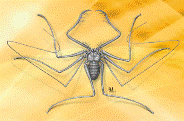Papers in the Biological Sciences

Eileen Hebets Publications
Document Type
Article
Date of this Version
January 2005
Abstract
The basic building blocks of communication are signals, assembled in various sequences and combinations, and used in virtually all inter- and intra-specific interactions. While signal evolution has long been a focus of study, there has been a recent resurgence of interest and research in the complexity of animal displays. Much past research on signal evolution has focused on sensory specialists, or on single signals in isolation, but many animal displays involve complex signaling, or the combination of more than one signal or related component, often serially and overlapping, frequently across multiple sensory modalities. Here, we build a framework of functional hypotheses of complex signal evolution based on content-driven (ultimate) and efficacy-driven (proximate) selection pressures (sensu Guilford and Dawkins 1991). We point out key predictions for various hypotheses and discuss different approaches to uncovering complex signal function. We also differentiate a category of hypotheses based on inter-signal interactions. Throughout our review, we hope to make three points: (1) a complex signal is a functional unit upon which selection can act, (2) both content and efficacy-driven selection pressures must be considered when studying the evolution of complex signaling, and (3) individual signals or components do not necessarily contribute to complex signal function independently, but may interact in a functional way.


Comments
Published in Behavioral Ecology and Sociobiology 57:3 (January 2005), pp. 197–214; doi 10.1007/s00265-004-0865-7 Copyright © 2004 Springer-Verlag. Used by permission. http://www.springer.com/life+sci/behavioural/journal/265